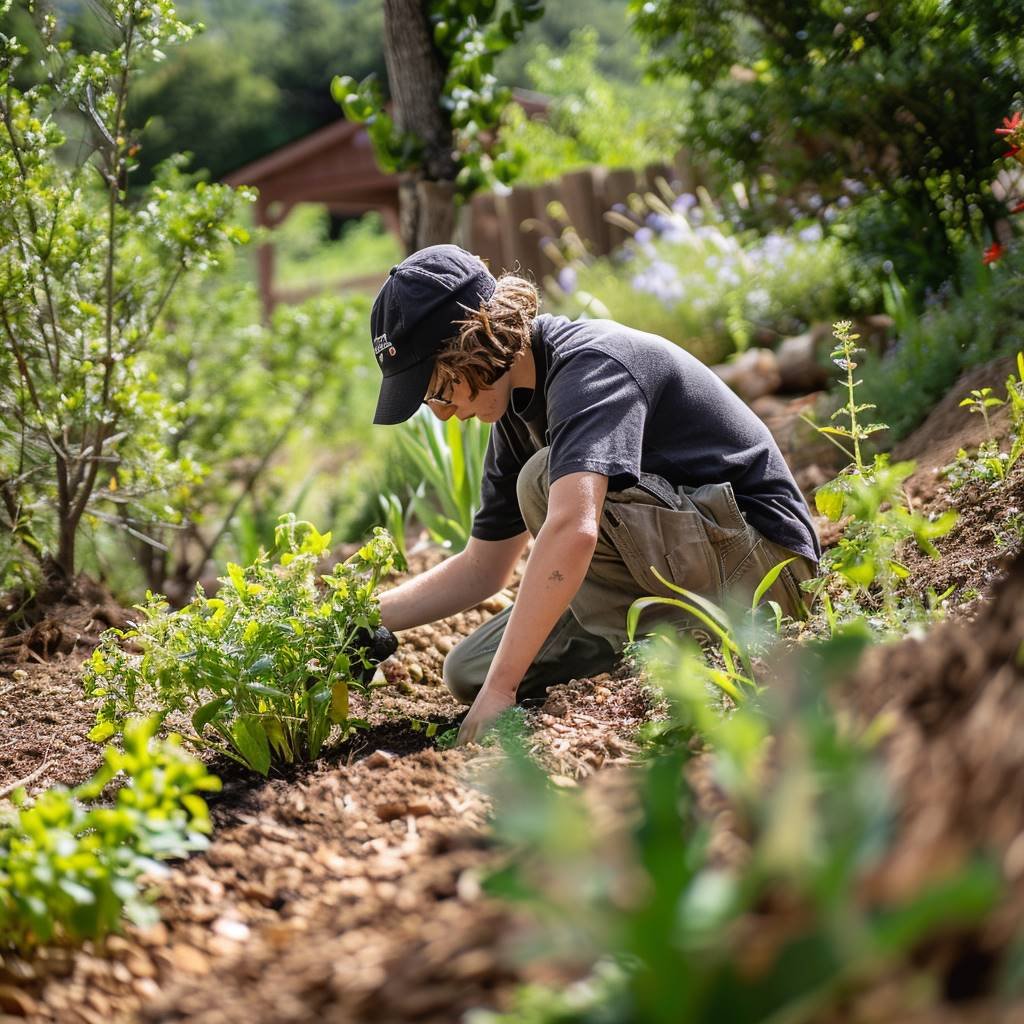Transforming your yard doesn’t have to be expensive. By making smart choices, you can save substantial amounts on your landscaping project. There are plenty of affordable options that still provide great results.
Taking control of your landscaping project through careful planning and DIY efforts can be incredibly rewarding and cost effective.
Key Takeaways
- Plan your landscape design to avoid overspending.
- DIY techniques are cost-effective and rewarding.
- Choosing the right contractor saves time and money.
Planning Your Landscape Design

Having a well laid out plan can save you nickles on the dime when it comes to planning it yourself. Crafting a plan that works around your exact vision is ideal.
Assessing Your Needs and Preferences
First, evaluate what you want in your yard. Do you prefer a flower garden, a vegetable plot, or a relaxation area? Determine if you need areas for children or pets.
Next, look at your yard’s layout. Note sunny and shady areas, soil type, and drainage.
Consider long-term maintenance. Choose designs that fit your available time and energy. For instance, low-maintenance plants and automated watering systems can save time and reduce costs.
Researching Cost-Effective Plants and Materials
Start by choosing plants that thrive in your local climate. Native plants usually need less water and fewer chemicals. This can make them cheaper to maintain.
Look for sales at local nurseries or garden centers. Sometimes, you can find discounted plants at the end of the growing season. Or just, pick up the clippings while you’re there and grow them yourself, of course.
Use materials that are durable but affordable. For example, mulch can be a low-cost way to keep your soil moist and reduce the need for watering.
Explore local resources for free materials, like community compost or recycled wood. Using these can lower your costs while adding personal touches to your landscape.
Budgeting and Cost Management

Effective budgeting and careful expense tracking can make a significant difference in the success of your landscaping project. By setting a realistic budget and diligently monitoring your costs, you can ensure your project stays on track financially.
Setting a Realistic Budget
Take into account the size of your yard, desired features, and potential costs such as materials, labor, and permits. Using average costs from reliable sources can help guide your estimates.
It’s essential to prioritize elements that will have the most significant impact. For example,
Garden beds might cost between: $300 – $800
While outdoor lighting can range from: $300 – $1,200
Consider using alternative materials to reduce costs. Shop around and go local, if you have a need for it you can get a deal for it.
Tracking Expenses During the Project
Maintaining a detailed record of your expenses as the project progresses is important to saving money. Regularly review your expense log to catch any potential overspending early.
Use free or inexpensive apps designed for budgeting and expense tracking. These tools can make the process easier and provide real-time updates on your spending.
DIY Landscaping Techniques

Transforming your yard on a budget is easier when you tackle the work yourself. By focusing on low-maintenance and cost-effective solutions, you can create a beautiful outdoor space without costing yourself an arm and a leg.
Utilizing Low-Maintenance Solutions
Choosing low-maintenance plants is a smart way to save time and money. Speaking in long-terms, lower maintenance is going to save you water and time, which saves you a lot in the long run.
Mulch not only improves soil quality but also helps retain moisture and suppress weeds, cutting down your need for frequent watering and weeding.
Consider hardscaping elements like stone pathways or gravel beds. These options require very little upkeep and can significantly enhance your yard’s appearance.
Repurposing Household Items
Get creative with items you already have at home. Old tires can be painted and used as planters, while broken pots can create unique garden sculptures or fairy gardens.
Think about using kitchen scraps and compost to enrich your soil. Not only does this reduce waste, but it also provides a cost-effective way to nourish your plants.
Incorporating Salvaged Materials
Look for salvaged materials like metal gates, old windows, or bathtubs to add character to your garden. These can be turned into decorative features or functional items like garden beds and water features.
By keeping an eye out for salvageable items, you can transform your garden into a space that is both beautiful and budget-friendly.
Choosing the Right Landscape Contractor
![[object Object]](https://south-canyon.com/wp-content/uploads/2024/06/About-Us-Photo.jpg)
Selecting the best landscape contractor is important for ensuring your project runs smoothly and stays within budget. You’ll want to focus on comparing quotes and services and understanding contract essentials.
Comparing Quotes and Services
Look at the services offered by different contractors. Some may include design services, while others might specialize in maintenance. Compare what’s included in their packages to determine the best value for your needs.
Check their portfolio and ask for references. Seeing previous work and talking to past clients can give you an idea of their reliability and expertise. It’s also important to verify their credentials and make sure they are licensed and insured.
Understanding Contract Essentials
Before you sign any agreement, make sure you understand the contract fully. A good contract should outline the scope of work, timeline, payment schedule, and any warranties or guarantees.
Look for clauses that address unexpected costs or delays. Knowing how these issues will be handled upfront can save you from potential stress and financial strain later.
Make sure that the contract states what will happen if either party needs to terminate the agreement.
